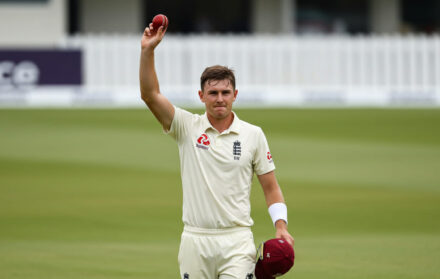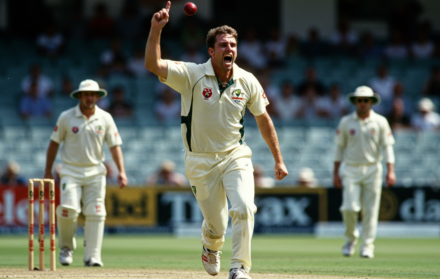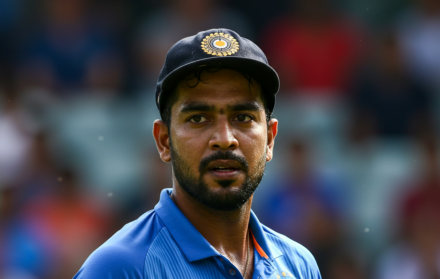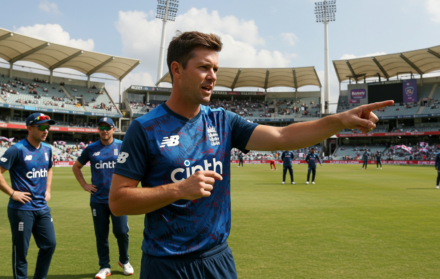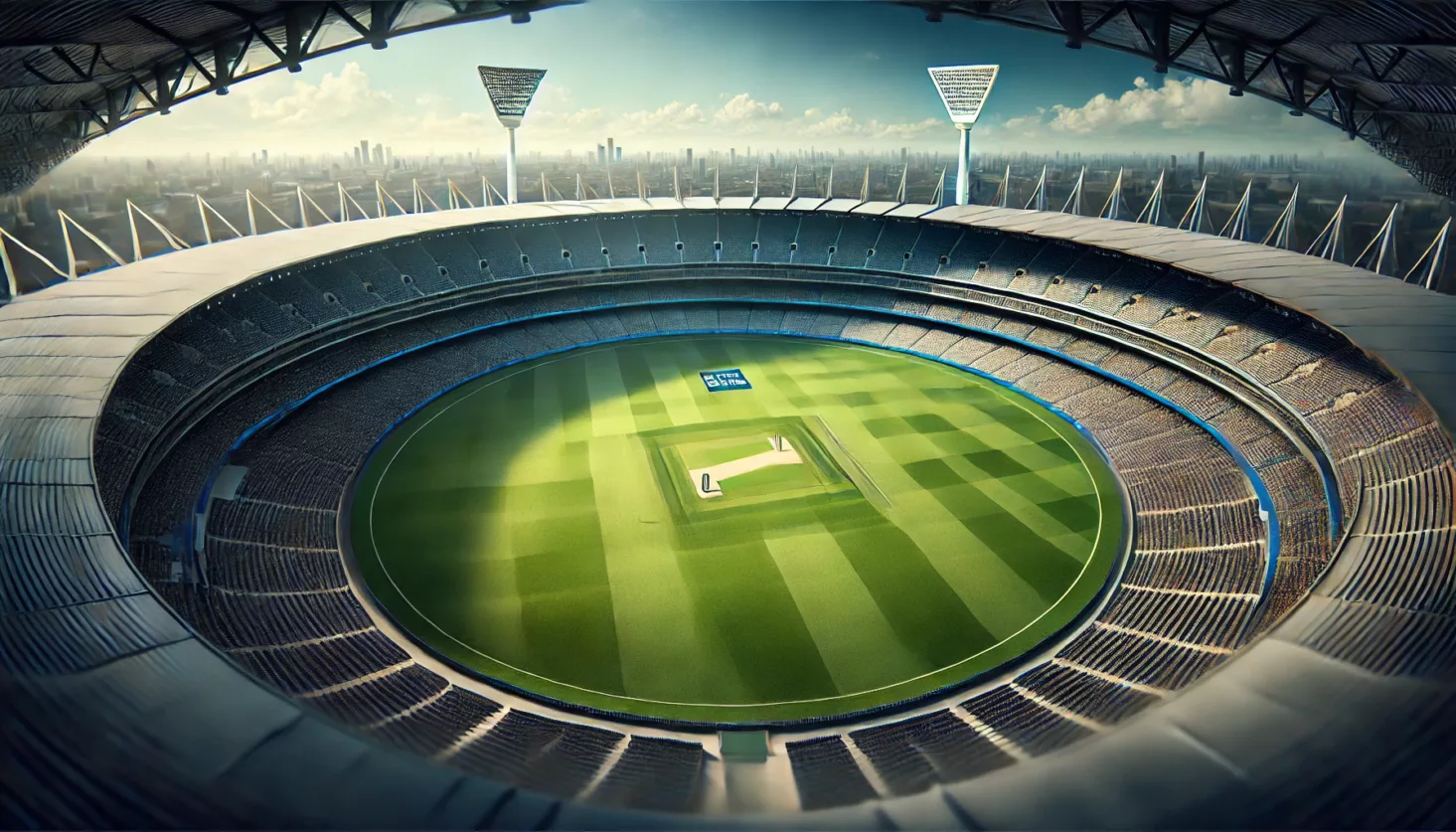
The History and Legacy of Melbourne Cricket Ground
The Melbourne Cricket Ground (MCG), affectionately known as “The G“, is a historic and iconic sporting venue with a rich history and legacy. Founded in 1853, the MCG is the birthplace of Australian cricket and has since become an internationally renowned arena for various sports and events.
Its significance goes beyond just cricket, as it has hosted historic moments, iconic matches, and international competitions across different sports.
The architectural features and design of the MCG, including its distinctive grandstands and iconic scoreboard, make it a visually captivating venue. Beyond its sporting events, the MCG holds a special place in Australian culture and is cherished for preserving its heritage and traditions.
For sports enthusiasts and tourists alike, visiting the MCG is a must, offering an unforgettable experience. With its immense capacity and electric atmosphere, the MCG stands as a symbol of sporting excellence and is truly an iconic venue that has left an indelible mark on the history and culture of Australia.
The Origins of Melbourne Cricket Ground
The Melbourne Cricket Ground, or MCG, has a remarkable history that dates back to its origins in the 19th century. Established in 1838, this cricket ground is now the largest stadium in Australia, boasting an impressive capacity of over 100,000 seats.
While initially used exclusively for cricket matches, the MCG has undergone expansions throughout the years to accommodate other sports and events such as Australian rules football and concerts. It has served as the iconic venue for noteworthy events like the Melbourne Olympics in 1956 and the Commonwealth Games in 2006.
The construction of the MCG was financially supported by the Melbourne Cricket Club, which was founded in 1838 and still maintains ownership and oversight of the stadium. This club played a vital role in the development of the MCG.
Today, the MCG represents a symbol of Australian sports and culture, attracting sports enthusiasts from around the world. Its origins have laid the foundation for its legacy, transforming it into a world-class sports venue that continues to host major events to this day.
The Construction and Development of Melbourne Cricket Ground
The Construction and Development of Melbourne Cricket Ground (MCG) began in 1853 on Yarra Park. The building process included leveling and draining the area to create a suitable playing ground.
Over the years, the MCG has undergone extensive expansion to meet the increasing demand for cricket and other events. Presently, it boasts a seating capacity of over 100,000 spectators, making it the largest stadium in Australia.
One of the highlights of the MCG is its iconic stands, such as the Great Southern Stand, Ponsford Stand, and Olympic Stand. These stands not only offer excellent views of the game but also contribute to the unique atmosphere and ambiance of the stadium.
As part of its development, the MCG has embraced modern advancements, featuring state-of-the-art lighting systems and giant screens that further enhance the spectator experience. The stadium also provides contemporary facilities for players and officials, ensuring their comfort and convenience.
Throughout its history, the MCG has played host to numerous significant sporting events, including the Olympic Games, Commonwealth Games, and Cricket World Cup finals. This has solidified its reputation as a premier venue on the international stage.
When visiting the MCG, it is highly recommended to explore all of the stands for a comprehensive experience. There are guided tours available that provide insights into the construction and history of the stadium.
Whether you are a sports enthusiast or simply appreciate remarkable architecture, the construction and development of the MCG is sure to leave you in awe.
Historic Moments in Melbourne Cricket Ground
The Historic Moments in Melbourne Cricket Ground are truly remarkable. Since its inception in 1877, it has been the site of numerous significant events in the world of cricket.
One such moment occurred in 1930 when Sir Donald Bradman achieved an extraordinary individual score of 334 runs, setting a world record at the Melbourne Cricket Ground.
Another momentous occasion took place in 1971, when the ground hosted its first One-Day International (ODI) match, introducing a new format of cricket.
Fast forward to 1981, where controversy ensued as the Australian captain, Greg Chappell, controversially instructed his bowler to deliver an underarm ball during a match against New Zealand, resulting in substantial changes to cricket regulations.
In 1997, all eyes were on the Melbourne Cricket Ground as it served as the venue for the Women’s Cricket World Cup final. Australia emerged as the champions, triumphing over New Zealand. The Melbourne Cricket Ground has had the privilege of hosting the ICC Cricket World Cup finals three times.
In 1992, Pakistan emerged as the winners, while Australia claimed victory in both 2015 and 2020 (played in 2021 due to the pandemic).
The Melbourne Cricket Ground truly holds a special place in the history of cricket, thanks to these iconic and unforgettable moments.
The Legacy and Significance of Melbourne Cricket Ground
The Melbourne Cricket Ground (MCG) is the largest cricket stadium in the Southern Hemisphere and holds an important and unmatched legacy in the world of cricket. It has witnessed numerous historic moments and has had a lasting impact on the sport.
1. Historical Moments: The MCG has hosted iconic matches, including the first-ever Test match in 1877 and Sir Don Bradman’s famous 270 against England in 1937.
2. Capacity and Atmosphere: With a seating capacity of over 100,000, the MCG provides a breathtaking experience for fans. The passionate supporters contribute to the electric atmosphere and charm of the stadium.
3. Cultural Significance: The MCG is not just a sporting venue but also a symbol of national pride in Australian culture. It holds a special place in the hearts of Australians.
4. Multi-Purpose Venue: The MCG is a versatile venue, hosting various events such as Australian Rules Football matches, concerts, and the 1956 Summer Olympics. Its ability to cater to different sports and entertainment events makes it a true multi-purpose venue.
5. Community Engagement: The MCG is committed to community engagement and development. It hosts programs that promote inclusivity, diversity, and youth participation in sports, extending its legacy beyond just sport.
The history of the Melbourne Cricket Ground dates back to its establishment in 1853. It quickly became a popular venue for major sporting events and has since evolved into a world-class stadium with state-of-the-art facilities. Its legacy and significance cannot be underestimated as it remains a cornerstone of Australian cricket and a symbol of national sporting pride.
Architectural Features and Design of Melbourne Cricket Ground
The Melbourne Cricket Ground (MCG) is renowned for its architectural features and design, which make it a top-tier sporting venue. With a capacity of over 100,000 spectators, it proudly stands as the largest stadium in Australia and one of the largest globally.
What sets MCG apart is its array of grandstands, including the Great Southern Stand, the Ponsford Stand, the Olympic Stand, and the Members Stand. These grandstands not only offer fantastic views but also provide modern facilities for an enhanced experience.
The MCG showcases a partially retractable roof that covers the Great Southern Stand, ensuring shade and protection for spectators. Adding to its appeal is the historical Yarra Park Gate, a 20th-century arcade that graces its exterior. This combination of architectural elements adds to the MCG’s aesthetic allure.
When it comes to the playing surface, the MCG excels by providing a world-class field for both cricket and Australian Rules Football matches. The meticulous maintenance of this field ensures an excellent playing experience for athletes and contributes to the venue’s reputation.
To enhance the visitor experience, the MCG offers various facilities including food and drink outlets, merchandise stores, and corporate hospitality areas. The stadium has been designed with accessibility in mind, providing ramps, lifts, and designated seating for individuals with disabilities.
In summary, the architectural features and design of the Melbourne Cricket Ground harmoniously blend functionality and aesthetics, resulting in a world-class sporting venue that draws crowds from around the globe.
Other Events Held at Melbourne Cricket Ground
Numerous events have been held at the Melbourne Cricket Ground throughout its history. Here is a list of notable events:
- Sports events: The MCG has hosted Australian Rules Football matches, international cricket matches, rugby matches, and football matches. It has also been the venue for major sporting events such as the Olympic Games and the Commonwealth Games.
- Concerts: The MCG has been a popular venue for concerts by music artists like Madonna, U2, Adele, and Taylor Swift, attracting large crowds.
- Big Bash League: The MCG has been the home ground for the Melbourne Stars in the Big Bash League, Australia’s premier Twenty20 cricket competition. The stadium has hosted exciting matches and is a favourite among cricket fans.
- AFL Grand Final: The Melbourne Cricket Ground hosts the Australian Football League (AFL) Grand Final, the pinnacle of Australian Rules Football. This event attracts over 100,000 spectators annually and is one of the most anticipated events in Australian sports.
- Cricket World Cup: The MCG has hosted multiple Cricket World Cup matches, including the finals. These matches have witnessed some of the tournament’s best moments.
These are just a few examples of the events held at the Melbourne Cricket Ground. Its versatility and iconic status make it a sought-after venue for various events, ensuring its enduring legacy in the world of sports and entertainment.
Connection to Australian Rules Football
The Melbourne Cricket Ground (MCG) has a strong connection to Australian Rules Football, one of the most popular sports in Australia.
It has been the home ground for the Australian Football League (AFL) Grand Final since 1902.
Beyond hosting the Grand Final, the MCG has also witnessed many memorable matches and iconic moments in the sport’s history.
Fans flock to the MCG every year to watch their favourite teams compete.
With a seating capacity of over 100,000, the MCG allows a large number of fans to experience the excitement and passion of Australian Rules Football.
The atmosphere inside the stadium during a match is electric, with fans cheering and supporting their teams.
Australian Rules Football has played a vital role in shaping the identity of the MCG and its position in Australian sporting history.
The enduring popularity and cultural significance of the sport in the country are evident in the MCG’s strong connection to it.
International Matches and Competitions Hosted at Melbourne Cricket Ground
The Melbourne Cricket Ground (MCG) has a prosperous history of hosting international matches and competitions. It is renowned as one of the foremost cricket venues in the world.
- The Ashes: The MCG has witnessed captivating encounters between England and Australia. Notably, the 1928-1929 Ashes Test witnessed Don Bradman scoring a record-breaking 340 runs, securing victory for Australia.
- World Cups: The MCG has been a prominent venue for cricket World Cup matches. In 1992, the ground witnessed the first day-night World Cup final, where Pakistan emerged victorious against England.
- Twenty20 Internationals: The MCG has also hosted numerous high-profile Twenty20 matches. The most memorable was the 2015 ICC Cricket World Cup final, where Australia defeated New Zealand to claim their fifth World Cup title.
- ICC Women’s T20 World Cup: The MCG has embraced women’s cricket, as it has hosted the finals of the ICC Women’s T20 World Cup. The 2020 final set a record for the highest attendance at a women’s sporting event, with over 86,000 spectators.
- Indian Premier League (IPL): The MCG has been a favorite destination for IPL matches held outside of India. Spectators have witnessed intense battles between various franchises, adding to the global prestige of the MCG.
- Test Matches: The MCG has been a regular host for test matches featuring different nations. Notable contests include the iconic tied Test match between Australia and the West Indies in 1984, considered one of the greatest ever played.
- Big Bash League (BBL): The MCG has become a hub for T20 domestic cricket, attracting large crowds for matches involving the Melbourne Stars and the Melbourne Renegades in the BBL.
The Melbourne Cricket Ground continues to serve as a fitting stage for international matches and competitions, displaying the true essence of the sport and leaving a lasting legacy in the cricketing world.
Preserving the Heritage and Tradition of Melbourne Cricket Ground
Preserving the heritage and tradition of the Melbourne Cricket Ground (MCG) is of utmost importance. The MCG, being one of the oldest and most iconic cricket stadiums globally, holds immense historical significance. The preservation of its authenticity is essential to enable future generations to understand and appreciate the legacy of the sport.
Maintenance of infrastructure plays a vital role in upholding the MCG’s original architecture and historical features. It is crucial to regularly upkeep the iconic stands and pavilions that contribute to the unique character of the venue.
Conservation of artefacts is another crucial aspect of preserving the MCG. The venue houses a vast collection of cricket memorabilia and artefacts, which must be properly preserved to withstand the test of time and remain accessible to visitors.
In order to retain the cultural legacy of the MCG, it is vital to promote traditional sporting events held at the venue, such as the Boxing Day Test match and AFL Grand Final.
Education and awareness regarding the MCG’s heritage are key factors in fostering appreciation, especially among the younger generation. Guided tours, exhibitions, and educational programs can be organized to highlight the significance of the venue.
By actively preserving the heritage and tradition of the MCG, future generations will continue to appreciate its historical importance and the value it holds in the world of cricket.
How to Visit Melbourne Cricket Ground
Visiting the Melbourne Cricket Ground (MCG) is an invigorating experience for sports enthusiasts and tourists.
1. Plan your visit: Determine the date and time. Check the MCG website or contact the stadium for information on events, matches, or tours.
2. Arrive at the stadium: Utilize public transport as parking is limited. Trains, trams, and buses provide access to the MCG.
3. Purchase tickets: Obtain tickets in advance, particularly for popular matches or events. Check the MCG website for availability and pricing details.
4. Explore the MCG Museum: Begin your visit by exploring the museum showcasing the stadium’s history and memorabilia.
5. Join a guided tour: Enhance your MCG experience by participating in a tour. These tours provide insights into the stadium’s history, architecture, and behind-the-scenes areas.
6. Visit the National Sports Museum: Situated within the MCG, the National Sports Museum offers interactive exhibits and displays dedicated to Australian sport.
7. Enjoy the atmosphere: Immerse yourself in the vibrant ambiance of the MCG during a live sporting event. Show support for your favorite team and absorb the excitement.
8. Explore Yarra Park: After your visit to the MCG, take a leisurely stroll through the beautiful Yarra Park surrounding the stadium. Enjoy picnics, walking trails, or simply relax amidst nature.
By following these steps, you can make the most of your visit to the Melbourne Cricket Ground. Check the MCG website for specific guidelines or restrictions before your visit.
Frequently Asked Questions
Who founded the Melbourne Cricket Club (MCC) and when was it established?
The Melbourne Cricket Club (MCC) was founded on November 15, 1838 by five men: Frederick Powlett, Robert Russell, George B. Smyth, and brothers Alfred and Charles Mundy.
Where was the MCC’s first cricket match played?
The MCC’s first cricket match was played on November 17, 1838, at the Old Mint site on William Street in Melbourne.
What events has the Melbourne Cricket Ground (MCG) hosted in addition to sports?
Apart from sports events, the MCG has hosted blockbuster music concerts and even a mass by Pope John Paul II during his visit to Melbourne in 1986.
What significant sporting events have taken place at the Melbourne Cricket Ground (MCG)?
The MCG has hosted international cricket matches, including the first-ever Test and the 1992 World Cup final. It has also been the venue for numerous VFL/AFL Grand Finals, the 1956 Olympic Games, Australian World Cup soccer qualifiers, rugby league matches, State of Origin, international rugby union clashes, and the 2006 Commonwealth Games.
When was the last renovation of the Melbourne Cricket Ground (MCG) completed?
The last renovation of the MCG was completed in 2006.
How can the history of the Melbourne Cricket Ground (MCG) be explored?
The history of the MCG can be explored through a timeline of significant moments and a detailed account of its broad history. Tours are available to explore the cricket history and experience the MCG, including visits to the long room, Bill Lawry Cricket Center, MCC Museum, viewing rooms, and a walk around the entire area. These tours depart daily in the afternoon.

